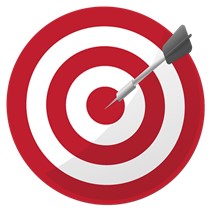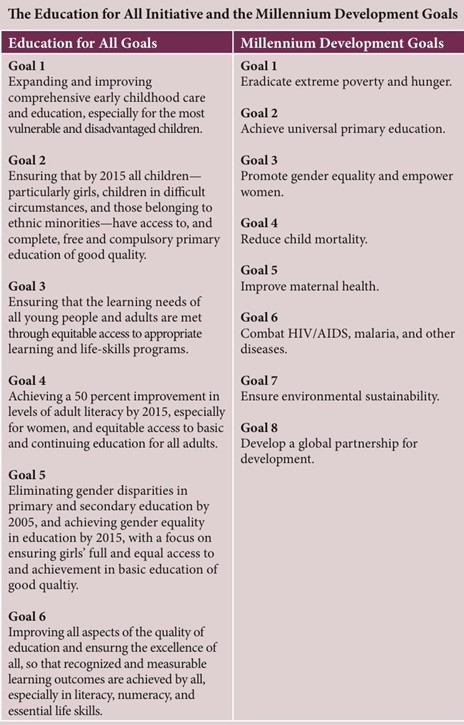(2021-2022) Rethinking Development & Female Education Lesson Plan
Written by Ella McKeand, Ella Seabrook-Wafer, Sam Ut Chan, Stevee West, Patrick Jones-O’Brien.

Aims
- To enable students to develop critical faculties and to engage with development through the lens of education.
- To transcend student’s norms anchored in education as a central tool to a good process of development
- To recognize the existing potential limitation of female education as a development tool for developing and well developed countries.
- To be able to reflect on one’s experience in education and evaluate what might serve beyond or in conflict with the goals laid out in the Sustainable Development goal 4 (SDG4).
- To recognise the act of critical thinking as a form of anthropological approach.
 Resources Needed
Resources Needed
We will need 6 A1 sheets of paper and 6 marker pens for the group brainstorm at the start of the lesson. A room with a computer and projector is needed in order to show the “Educate a Girl, Change the World” video to the students.
Basic Requirements
Aiming to work with a class of ~ 25 students.
An approximate of 5 small groups of 4 to 5 students for the brainstorm activity. We’d like for the gender of students in groups to be mixed, for varied reflection about their education.
Background
- The approach to thinking critically about social programmes and issues is fundamentally anthropological. Anthropology is an academic approach that documents and compares personal experiences and social practices to explain and understand abstract forces and complex systems that govern human culture and life.
- We have derived three exemplar critiques of education intended to enable students to engage critically with educational development projects. A brief abridged summaries of three academic journal articles:
- “Does Education Empower Women? The Regulated Empowerment of Parhi Likhi Women in Pakistan”. The authors found that enlarging the role of education in women’s lives interacts with their identity and notions of public and private spheres of life without necessarily positive results.
- “Education: Keystone of Apartheid” is an older piece of research making an effective argument that education can be used as a tool of oppression deliberately by a state intending to stimulate development.
- Example of education policy in affluent countries: “Class Readings: Story and Discourse among Girls in Working-Poor America ”. An ethnography to highlight that even effective development projects focused on women in the rich west can be fruitfully criticised, reproducing some inequalities while helping to eliminate others.
- The final part of the lesson relies on Sustainable Development Goal 4, the United Nations target for education around the world to be achieved by 2030. It says that the United Nations should “Ensure inclusive and equitable quality education and promote lifelong learning opportunities for all”. Students will look at this set of targets and consider their own experience of education in the developed world, applying the critical faculties that the lesson attempts to invigorate, to understanding and taking charge of their own education.
Brief for Students
In today’s lesson, we will provide you with the skill of thinking critically. In this session you will be given the chance to critique your own education, taking your learning into your own hands. We are going to talk about development, and more specifically education for women and girls. Education is one of the main focuses of development projects around the world and is often cited as a crucial tool to helping so-called ‘developing countries’ become more developed. Education provides opportunities through empowerment, but we know that there are likely to be both positive and negative implications of education implementation. You will explore the unexpected consequences and limitations of various development projects in Pakistan, South Africa and America. Today we would like you to think about different education systems, including your own, and using the tools and examples we provide you with, to critically analyse the impacts of education in development, how it may be problematic and what could be thought about differently. We hope to give you an insight into what anthropology is through this topic, the kinds of questions we ask in anthropology, and what it would be like to study/work in anthropology in the future.
Lesson Plan
|
Task |
Description |
Time |
Resources Needed |
|
Mind maps |
For the first task, split the class into mixed-gender groups of 4-5 students. Ask students to rethink their own education by making a mind map in response to: What do you feel is missing from your education? How would you improve your own education? |
5 mins |
Paper
Marker pens
Slides |
|
Introductory Video |
Following the mind maps, show the class a video titled “Educate a Girl, Change the World”. (3 mins) Educate a Girl, Change the World Questions to ask after the video: (5 mins) -What is the focus of this video? -Can you see any barriers to education for girls in this video? -In what ways are these barriers affecting girls’ lives? -How could education for girls change this? |
8 mins |
Projector
Slides |
|
Case studies |
Present 3 educational development projects: Option to discuss the issues/limitations with each development project after each example or consolidate at the end.
Discussion around how development projects do not always have positive results/ have unforeseen consequences.
Discussion regarding how development projects can be used as a tool of oppression deliberately by a state intending to stimulate development.
Discussion of development projects focused on females in more ‘developed’ countries (like the United States) can still become problematic, reproducing some inequalities while helping to eliminate others. |
10-12 mins |
Slides |
|
Reflection |
With the videos and development examples in mind, cast a critical eye to Britain’s development goals. Introduce the class to SDG 4. Now, get students to return to their mind maps and add, alter or remove certain aspects of their original mind map. Use questions from the powerpoint to prompt reflection. Allow time at the end to reflect and ask questions. |
5 mins |
Slides
Mind Maps |
Additional Resources
- For further discussion: UN chief on the effect of the COVID-19 Pandemic on Children (16 April 2020)
- Summary of Goals

Bibliography
- Aura Freedom International (2014). Educate a Girl, Change the World. YouTube. Available at: https://www.youtube.com/watch?v=Lyi1ND6oVDc [Accessed 19 Nov. 2021].
- Kwauk, C., Sperling, G.B., Winthrop, R., and Yousafzai, M. (2016). ‘Glass Half Full: There Has Been Real Progress, But A Girls’ Education Crisis Remains’, In What Works in Girls’ Education: Evidence for the World’s Best Investment. Brooking Institution Press, pp. 63-100.
- Hicks, D. (2005). Class Readings: Story and Discourse among Girls in Working-Poor America. Anthropology & education quarterly, 36(3), pp.212–229.
- Johnson, W.R. (1982). Education: Keystone of Apartheid. Anthropology & Education Quarterly, 13(3), pp.214–237.
- Khurshid, A. (2017). Does Education Empower Women? The Regulated Empowerment of Parhi Likhi Women in Pakistan. Anthropology & Education Quarterly, 48(3), pp.252–268.
- United Nations (2020). UN chief on the effect of the COVID-19 Pandemic on Children (16 April 2020). YouTube. Available at: https://www.youtube.com/watch?v=3_EA7KMlro0 [Accessed 24 Nov. 2021].


0 Comments